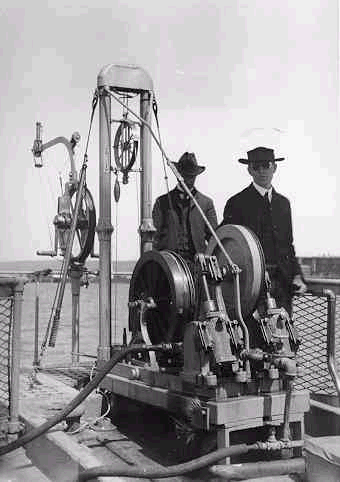About SCAMIT
 |
History
SCAMIT was formed in 1982 with the goal of promoting the study of marine invertebrate taxonomy in Southern California and developing a regionally standardized taxonomy. To accomplish this, SCAMIT provides a regular monthly forum to address problems in taxonomy, organizes taxonomic workshops, and maintains a reference collection and library of taxonomic literature. SCAMIT’s activities contribute to the scientific value of the many surveys of marine benthic invertebrate communities conducted in Southern California by assuring standardized taxonomy and compatibility between various taxonomic data sets.
Ann Dalkey has compiled a pictorial history of SCAMIT on the occasion of SCAMIT’s Twenty Year Anniversary (January 2003).
SCAMIT Constitution
The SCAMIT Constitution is the formal document that describes the structure and procedures of the organization (revised 26 March 2018).
SCAMIT Activities
Members meet monthly (usually on the second Monday) in various locations around Southern California. Our meetings include taxonomic workshops and/or speakers who lecture on the systematics and related ecology of a particular taxonomic group. Special workshops, by visiting investigators and experts from various institutions and museums, are also an integral part of SCAMIT. Descriptive information and comparative characteristics of species examined during these meetings are summarized in voucher sheets and tables distributed in the SCAMIT Newsletter.
In addition to our standardization program, SCAMIT supports with a grant program member projects to improve the quality of taxonomic data through development and revision of taxonomic keys and publication of new species descriptions. Members interested in applying for a publication grant should read the Taxonomic Publication Support Policy for further information and instructions.
In 1994, SCAMIT developed a comprehensive listing of local marine invertebrates from the infaunal monitoring programs in the Southern California Bight. This Taxonomic Listing of Soft Bottom Macroinvertebrates is periodically updated as knowledge of the marine invertebrate fauna expands.
SCAMIT Support
We are an entirely volunteer non-profit organization, with no employees. Costs of newsletter production and distribution, website costs, publication support grants, and stipends for out-of-area guest speakers are virtually our only expenses. Dues from membership partially offset these costs, but we also depend on financial support from outside agencies. Equally important is support of the agencies who allow their officer employees to conduct SCAMIT business as part of their work, and the companies and agencies that allow employee participation at the monthly meetings. Without such support it would be very difficult to find time to conduct the organization’s business. We are also supported by the Los Angeles County Museum of Natural History (LACMNH), which provides us the physical space to maintain our voucher specimen and literature collections. As an organization we owe all of the above contributors and supporters a debt of gratitude.
SCAMIT Members
Initially formed by taxonomists associated with Southern California wastewater treatment programs, the SCAMIT membership has diversified over the years. It now also includes consultants, museum scientists, and both students and researchers in the academic realm. Despite our local origins we have members from one coast of the U. S. to the other, and a scattered contingent of international members. Distance prevents most from active meeting participation, but we attempt to include everyone through the newsletter and website.
Please consider supporting SCAMIT by becoming a member.
Alliances
Besides the numerous public agencies with which SCAMIT is involved, we are beginning to explore cooperation with other related organizations. One such contact is with the Southwest Association of Freshwater Invertebrate Taxonomists (SAFIT). The two organizations have jointly sponsored two taxonomic workshops on fauna of common interest (hydrobiid snails and estuarine crustaceans). We plan to continue that collaborative interaction with other topics in the future.
